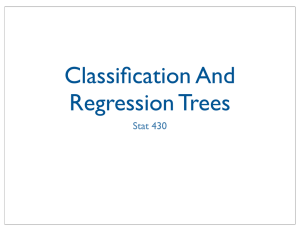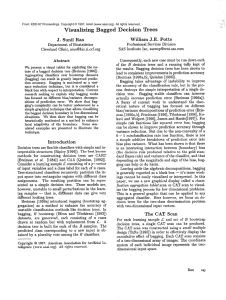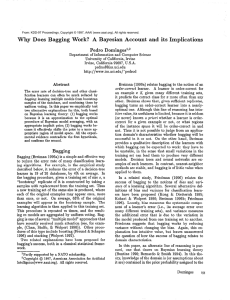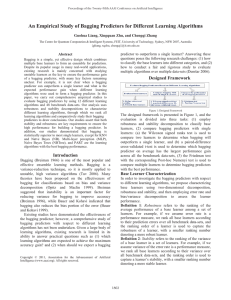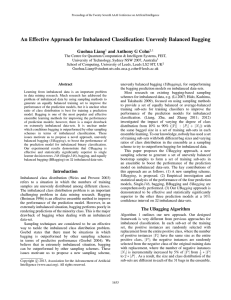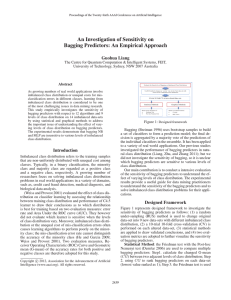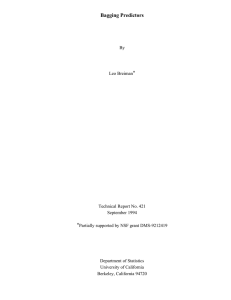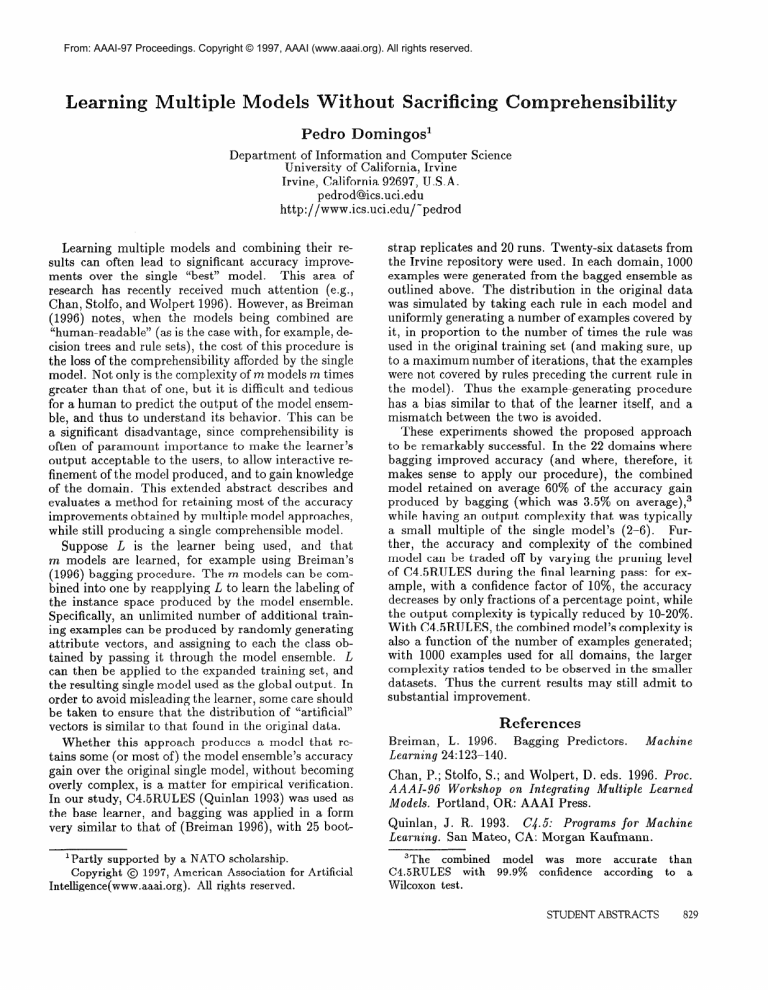
From: AAAI-97 Proceedings. Copyright © 1997, AAAI (www.aaai.org). All rights reserved.
earning Multiple
MO
it-y
Pedro Domingod
Department of Information and Computer
University of California, Irvine
Irvine, California 92697, U.S.A.
pedrod@ics.uci.edu
http://www.ics.uci.edu/“pedrod
Learning multiple models and combining their results can often lead to significant accuracy improveThis area of
ments over the single “best” model.
research has recently received much attention (e.g.,
Chan, Stolfo, and Wolpert 1996). However, as Breiman
(1996) notes, when the models being combined are
“human-readable”
(as is the case with, for example, decision trees and rule sets), the cost of this procedure is
the loss of the comprehensibility
afforded by the single
model. Not only is the complexity of m models m times
greater than that of one, but it is difficult and tedious
for a human to predict the output of the model ensemble, and thus to understand its behavior. This can be
a significant disadvantage,
since comprehensibility
is
often of paramount importance to make the learner’s
output acceptable to the users, to allow interactive refinement of the model produced, and to gain knowledge
of the domain. This extended abstract describes and
evaluates a method for retaining most of the accuracy
improvements obtained by multiple model approaches,
while still producing a single comprehensible
model.
Suppose L is the learner being used, and that
m models are learned, for example using Breiman’s
(1996) bagging p rocedure. The m models can be combined into one by reapplying L to learn the labeling of
the instance space produced by the model ensemble.
Specifically, an unlimited number of additional training examples can be produced by randomly generating
attribute vectors, and assigning to each the class obtained by passing it through the model ensemble.
L
can then be applied to the expanded training set, and
the resulting single model used as the global output. In
order to avoid misleading the learner, some care should
be taken to ensure that the distribution of “artificial”
vectors is similar to that found in the original data.
Whether this approach produces a model that retains some (or most of) the model ensemble’s accuracy
gain over the original single model, without becoming
overly complex, is a matter for empirical verification.
In our study, C4.5RULES (Quinlan 1993) was used as
the base learner, and bagging was applied in a form
very similar to that of (Breiman 1996)) with 25 boot’ Partly supp orted by a NATO
scholarship.
Copyright @ 1997, American Association
for Artificial
Intelligence(www.aaai.org).
All rights reserved.
Science
strap replicates and 20 runs. Twenty-six datasets from
the Irvine repository were used. In each domain, 1000
examples were generated from the bagged ensemble as
outlined above. The distribution in the original data
was simulated by taking each rule in each model and
uniformly generating a number of examples covered by
it, in proportion to the number of times the rule was
used in the original training set (and making sure, up
to a maximum number of iterations, that the examples
were not covered by rules preceding the current rule in
the model).
Thus the example-generating
procedure
has a bias similar to that of the learner itself, and a
mismatch between the two is avoided.
These experiments showed the proposed approach
to be remarkably successful. In the 22 domains where
bagging improved accuracy (and where, therefore, it
makes sense to apply our procedure),
the combined
model retained on average 60% of the accuracy gain
produced by bagging (which was 3.5% on average),3
while having an output complexity that was typically
a small multiple of the single model’s (2-6).
Further, the accuracy and complexity
of the combined
model can be traded off by varying the pruning level
of C4.5RULES during the final learning pass: for example, with a confidence factor of lo%, the accuracy
decreases by only fractions of a percentage point, while
the output complexity is typically reduced by lo-20%.
With C4.5RULES, the combined model’s complexity is
also a function of the number of examples generated;
with 1000 examples used for all domains, the larger
complexity ratios tended to be observed in the smaller
datasets. Thus the current results may still admit to
substantial improvement.
References
Breiman,
L. 1996.
Learning 24:123-140.
Bagging
Predictors.
Machine
Chan, P.; Stolfo, S.; and Wolpert, D. eds. 1996. Proc.
AAAI-96
Workshop on Integrating
Multiple Learned
Models. Portland, OR: AAAI Press.
Quinlan,
Learning.
J. R. 1993.
64.5:
Programs for Machine
San Mateo, CA: Morgan Kaufmann.
3The
combined
with
C4.5RULES
Wilcoxon test.
model
99.9%
was
more
accurate
confidence
according
STUDENT ABSTRACTS
than
to
a
829


